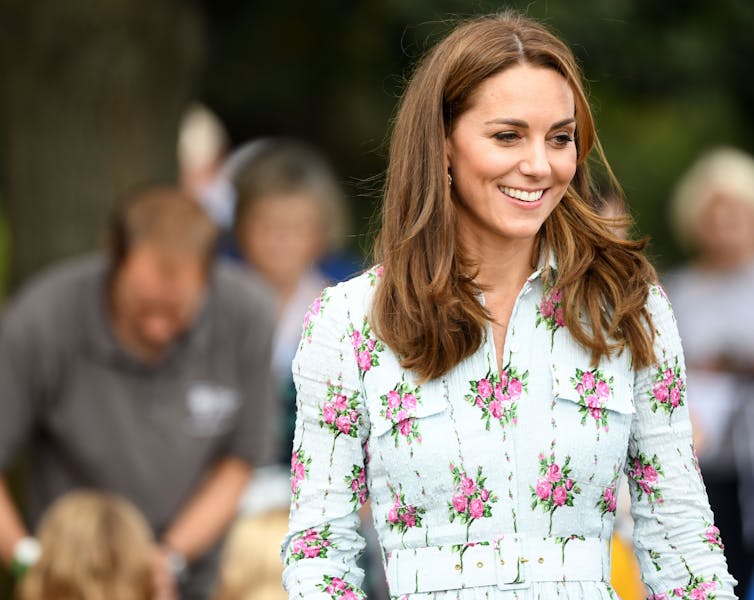
The Princess of Wales released a moving video message on March 22 to address speculation about her health. In it, the future queen disclosed that she’d been diagnosed with cancer following tests conducted after she underwent major abdominal surgery at a clinic in London in January.
Catherine explained that she was undergoing “preventative chemotherapy” – but emphasised that her surgery had been successful, and that she was “well” and “getting stronger every day”.
The message was the second announcement of a royal family cancer diagnosis in recent weeks. On February 5, Buckingham Palace published a statement that King Charles III had been diagnosed with an undisclosed form of cancer, unrelated to the treatment he had been receiving for an enlarged prostate.
The statement said that he had begun “regular treatments”. The king postponed all public-facing duties during his treatment, but reportedly continued with his “constitutional role as head of state, including completing paperwork and holding private meetings”.
Cancer is the leading cause of death worldwide. One in two people will develop some form of cancer in their lifetime – so the condition will affect almost every family. However, many cancers can be cured if, as appears to be the case with the king, the condition is detected early and treated effectively.
What is cancer?
Our bodies are made up of more than 100 billion cells, and cancer typically starts with changes in a small group of cells – or even a single one.
We have different cell types depending upon where in the body they are and the function that the cell has. The size, amount and function of each of these cells is normally tightly regulated by genes – groups of codes held within our DNA – that instruct cells how to grow and divide.
However, changes (mutations) to DNA can alter the way cells grow and multiply – often forming a lump, or solid tumour. Cancers can also develop in blood cells, such as white blood cell cancer which is known as leukaemia. This type of cancer does not form solid tumours; instead, the cancer builds up in the blood or sometimes the marrow in the core of bones, where blood cells are produced.
In all, there are more than 200 types of cancer, but all start with mutations in the DNA contained within each and every cell.
What exactly are mutations?
Think of your DNA as a big recipe book, and your genes as individual recipes for making different dishes. Mutations are smudges or missing words from this recipe that can result in key ingredients not being added into the mix.
Regardless of the type of cancer or the cells from which it develops, mutations in our genes can result in a cell no longer understanding its instructions.
These mutations can happen by chance when dividing, but can also be the result of lifestyle choices such as smoking, drinking, and inactivity.
Research has found that in order for a normal cell to turn into a cancerous cell, anywhere from one to ten different mutations are normally required.
How is cancer treated?
Treatment options for cancer depend on a variety of factors, including where your cancer is, how large it is, and whether it has spread to other parts of the body. The main treatments for cancer include surgery, chemotherapy, and radiotherapy.
Chemotherapy uses drugs to target and kill cells that are rapidly dividing in our bodies. This approach is effective at targeting fast-growing cells in various cancers – but also has negative side effects. It also targets healthy cells that rapidly divide, such as hair and the cells lining our digestive system. This can lead to commonly reported side-effects such as hair loss, nausea and diarrhoea.
Chemotherapy can be used both preventatively – as in the case of the princess – and therapeutically.
Preventative chemotherapy, also known as adjuvant chemotherapy, is given after surgery or other primary treatments to eliminate any remaining cancer cells in the body. It aims to reduce the risk of the cancer returning (known as recurrence).
Therapeutic chemotherapy is used as a treatment option for cancer that has spread or is well established, such as advanced-stage cancers.
Surgery involves the physical removal of cancerous tissues as well as nearby lymph nodes – small glands which act as filters in your body that cancers can spread through – to eliminate the tumour. Surgery is often used to remove localised cancers that haven’t spread throughout the body.
Radiotherapy uses high-energy radiation beams that are able to target specific areas where tumour cells are located to destroy or shrink the tumour. Radiotherapy can be applied externally or internally.
Chemotherapy, surgery, and radiotherapy are often combined in cancer treatment to improve outcomes for patients.
Thanks to developments in cancer research over the last 50 years, survival rates have improved greatly – although the rate of improvement has slowed recently. Cancer survival depends on various factors such as age – people under 40 have a greater chance of survival – overall health and fitness, as well as family history.
What you should do
Particular changes in your body or warning symptoms could indicate the presence of cancer. These include, but are not limited to:
- Unexplained weight loss;
- Fatigue that doesn’t improve with rest;
- Changes in bowel or bladder habits;
- Persistent cough or coughing up blood;
- Difficulty swallowing;
- Persistent pain;
- Noticing lumps, such as in a breast or testicle.
The symptoms may not necessarily be the result of cancer. But it is important to get checked by a doctor if you notice anything out of the ordinary or have had persistent symptoms that don’t ease. Early detection and treatment can significantly improve outcomes for many types of cancer.![]()
Gavin Metcalf, Cancer Biologist and Lecturer in Biomedical Science, Anglia Ruskin University
This article is republished from The Conversation under a Creative Commons license. Read the original article.

